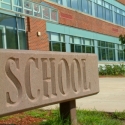
Welcome to GEORGE MIKLAS'
HarmonicaGallery.com

Welcome to GEORGE MIKLAS'
HarmonicaGallery.com

Research
presented at the American Psychological Association’s 2003
Convention showed that music lessons offered children “intellectual
benefits” and could even “fine-tune their sensitivity to emotion in
speech.” 6-year-old children in the study who took music
lessons (either keyboard or voice) showed an additional 2.5-point
increase in their IQ levels compared with other 6-year old children
who were not involved in music. These children were also
better able to identify a person’s emotion simply by tone of
voice. One of the researchers hypothesized that “perhaps the
same area of the brain processes both speech prosody and music, and
that ‘training in one domain would act to engage and refine those
neural resources.’” (Source: Chamberlin, J. “Are There
Hidden Benefits to Music Lessons?” Monitor on Psychology
Vol. 34, No. 9. American Psychological Association:
October 2003.)
A 2001
report by The College Entrance Examination Board showed that music
involvement increased students’ SAT scores. The report says
that “students in music performance [courses] scored 57 points
higher on the verbal and 41 points higher on the math, and students
in music appreciation [courses] scored 63 points higher on verbal
and 44 points higher on the math, than students with no arts
participation.” (Source: “College-Bound Seniors National
Report: Profile of SAT Program Test Takers.” Princeton, NJ:
The College Entrance Examination Board, 2001.)
According to Americans
for the Arts, the country’s leading non-profit organization for the
arts, “students with high levels of arts involvement are less
likely to drop out of school by grade 10.” The organization also
cites a Stanford University study conducted between 1987 and 1998,
found that young people who participated in an arts program, at
least three hours on three days of each week throughout at least a
year, were 4 times as likely to be recognized for academic
achievement, 3 times as likely to be elected to their class office,
4 times as likely to participate in a math and science fair, and 3
times more likely to win an award for school attendance than their
peers who did not participate in an arts program.
(Source: Americans for the Arts, 8/6/2004. http://www.americansforthearts.org/)
The Arts Education Partnership reported that according to a Columbia University study, “students in the arts are found to be more cooperative with teachers and peers, more self-confident and better able to express their ideas.” (Source: The Arts Education Partnership, 1999)